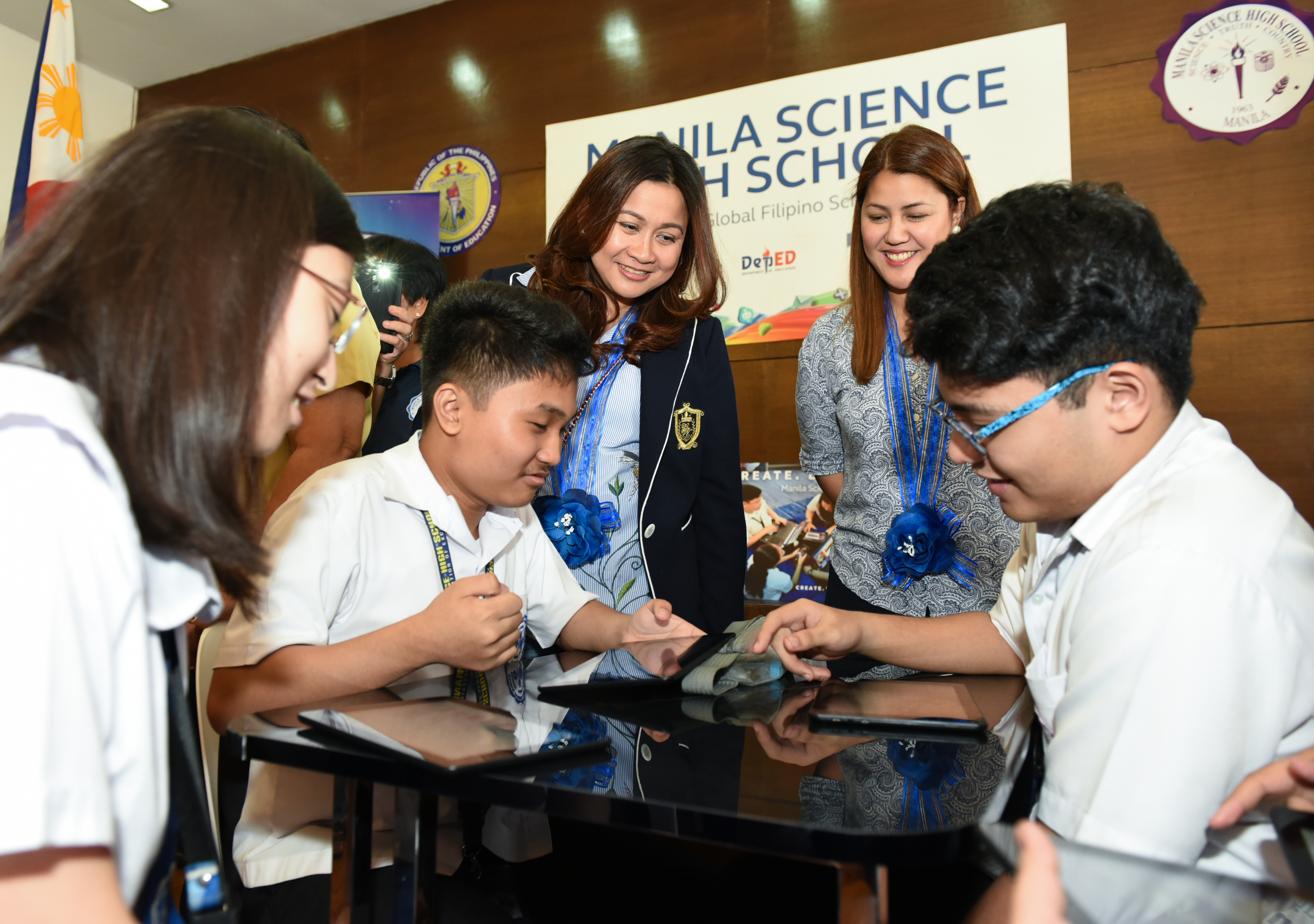Globe equips Manila Science HS with 21st Century classroom

Martha Sazon, Globe SVP for Broadband Business (standing left) and Rep. Cristal Bagatsing, Manila 5th District look on as Manila Science HS students demonstrate 21st century learning using technology tools provided by Globe.
Globe Telecom and Habitat for Humanity officially turned over to Manila Science High School (MaSci) over the weekend a multifunctional Information and Communications Technology (ICT) laboratory with a collaborative working space that is fit for 21st century learning.
Last year, MaSci, the first pilot science high school in the Philippines, joined the Global Filipino School (GFS) Program, a long-term educational initiative of Globe to transform select public schools into centers of excellence in ICT and hubs of innovative teaching methods.
A major component of GFS is the Creative Space which was a result of the renovation of underused classrooms. It includes modular tables designed to be quickly and easily moved around to form various shapes appropriate for individual learning, small-large group discussions and conferences. The classroom is also equipped with free internet connectivity and a mobile cart bearing netbooks, tablets, projectors, and WiFi dongles that can be brought anywhere in the school.
“Teachers in any subject may now engage with their students via electronic delivery mode of instruction in the GFS Creative Space. Technology-wise, this project will allow Manila Science High School to continue to sustain the high standard of excellence that it is known for,” said Eva Nacion, MaSci Principal.
Manila Science High School Batch ’91, which celebrated its Silver Jubilee in 2016, raised funds for this classroom renovation while Habitat for Humanity handled the construction. “Spearheading this project is our way of giving back to our beloved alma mater, a public school with a tradition of academic excellence. Our homecoming theme, ‘Back for the Future,’ encapsulates the batch’s overwhelming sentiment of gratitude for our MaSci education that has given us a competitive advantage in our professional and personal lives. Providing this new batch of scientists with fast fiber internet connectivity housed in an appropriate creative space with technologically-suitable equipment and trained ICT teachers is the kind of legacy our batch wants to leave behind,” said Marga Uy Baula, Batch ’91 Representative.
On the other hand, Martha Sazon, Globe Senior Vice President for Broadband Business said: “We truly appreciate Batch ‘91s support for the GFS program. If everyone in the community will join hands to bring the benefits of ICT to the schools, we can expect better performance from our teachers and students. We need our schools to take advantage of the best educational information and services that they can get given today’s fast-paced advancements in technology and ever changing educational landscape.”
MaSci was the initial recipient of a Globe Broadband’s fiber connectivity with speeds of up to 100 mbps to encourage the adoption and application of technology among students and teachers. This is in line with Globe Telecom’s vision of ushering the Philippines into becoming a digital nation by 2020.
A 2015 study released by Taylor Nelson Sofres corroborated Sazon’s statement. The study shows how the GFS program was able to improve digital skills among teachers and students, particularly on usage of mobile technology and computer software; enable 21st Century Learning Outcomes such as creativity, communication, collaboration, and creativity; increase student engagement in classroom activities; and enhance school culture through readiness in ICT integration.
There are now 80 schools under the Global Filipino School Program impacting 5,788 teachers and 151,526 students around the country. Another 60 GFS schools are launching this year. Total target is to share the GFS Program to all 221 DepEd Division by 2020.
